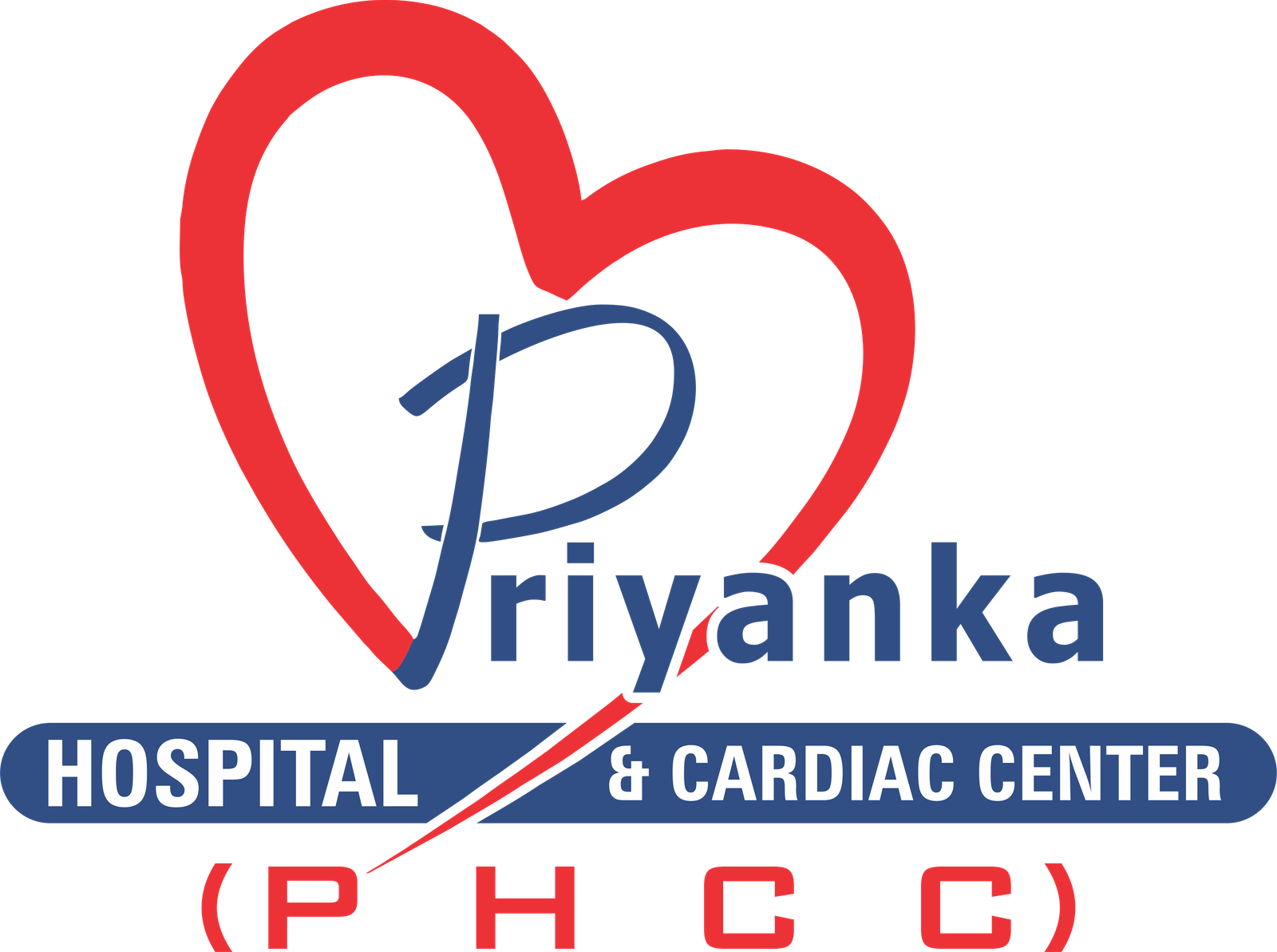Best Physiotherapy & Rehabilitation Hospital in Jaipur
Priyanka Hospital boasts the finest rehabilitation and physiotherapy Hospital in Jaipur, staffed with skilled physiotherapists who deliver personalized physical rehabilitation treatment. Our team caters to each patient’s specific requirements by offering specialized equipment equipped with assistive technology. Patients with disabilities receive guidance to make informed decisions about necessary services or equipment, including detailed information on insurance coverage and support schemes.
The Department of Physiotherapy & Rehabilitation at Priyanka Hospital is dedicated to enhancing and restoring the quality of life and functional ability of patients grappling with physical disabilities or impairments affecting various aspects of the musculoskeletal system. Our holistic approach covers conditions related to the spinal cord, nerves, brain, bones, ligaments, joints, muscles, and tendons. Recognizing the uniqueness of each patient, our goal is to minimize barriers to their independence, empowering them to lead more fulfilling lives.

Why Choose Priyanka Hospital For Physiotherapy & Rehabilitation in Jaipur
we specialize in providing advanced rehabilitation services to help patients recover from injuries, manage chronic conditions, and improve their overall mobility and function. As the best physiotherapy hospital in Jaipur, Priyanka Hospital offers a comprehensive range of rehabilitation services, including manual therapy, exercise therapy, electrotherapy, hydrotherapy, and specialized rehabilitation programs. We provide tailored treatment plans to optimize recovery and improve patients’ quality of life.
Comprehensive Rehabilitation Services
Rehabilitation services are complex and multifaceted activities and services that are targeted towards assisting patients to overcome their disability and enhance their health status after receiving an injury, sickness or other impairment. These services are offered by a coordinated team approach of healthcare professionals.
1. Physical therapy (PT): Physical therapists focus on rehabilitation and enhancing of the physical activities of an individual. They prescribe and perform exercises, mobilisations and manipulations, and functional activities in order to improve patients’ strength, flexibility, balance and coordination. Physical therapy might be useful for people who have orthopedic injuries, stroke, neurological disorders, joint replacements or muscle and skeletal disorders.
2. Occupational therapy (OT): Occupational therapists focus on helping individuals perform activities of daily living (ADLs) and improve their functional independence. They assess patients’ abilities and limitations and develop personalized interventions to enhance skills for self-care, work, leisure, and social participation. Occupational therapy may be beneficial for individuals with physical, cognitive, or developmental disabilities, as well as those recovering from injuries or surgeries.
3. Speech-language therapy (SLP): Speech-language therapists are professionals who diagnose and provide care for people with communication and swallowing difficulties. They assist patients with speech therapy, language, cognitive, voice, fluency and swallowing disorders with the help of different therapeutic procedures. Communication skills can be helped through speech-language therapy if a person is having speech or language disorders, learning disabilities, memory problems, a stroke, a head injury or a degenerative disease.
4. Rehabilitation nursing: Rehabilitation nurses play a crucial role in coordinating and delivering holistic care to individuals undergoing rehabilitation. They assess patients’ medical and nursing needs, provide education and support, monitor progress, and collaborate with other members of the rehabilitation team to optimize outcomes. Rehabilitation nurses may work in inpatient rehabilitation units, outpatient clinics, long-term care facilities, or community settings.
5. Psychosocial support: Most of the rehabilitation programs involve the use of psychosocial support to tackle the psychological aspect of the patient’s treatment. A psychological support can be individual psychotherapy, group sessions, and family sessions and counseling by such professionals as psychologists, social workers, counselors, etc for the patient who undergoes rehabilitation and could have problems in his or her life or needs help in coping with changes in his or her life.
6. Assistive technology: Physical therapy, occupational therapy, speech therapy, and other special therapies might include the utilization of mobility aids, assistive devices, equipments, and technologies to support functional performances and independence. This may encompass mobility assistances (wheelchairs, walkers and crutches), communication equipment, orthopaedic and prosthesis, changes of environment and home modifications.
7. Vocational rehabilitation: Vocational rehabilitation services help people with disabilities get back to work or find gainful employment if that has become a goal of the person with a disability. It involves offering career counseling, job training, job placement services, and accommodations to enable a client to get a job or go back to work.
8. Community reintegration: Hence, comprehensive rehabilitation services are frequently directed at enabling people to regain their place in society and be able to engage in worthwhile activities or occupations. This may include group and/or individual activities such as, community trips, social skills training, leisure/recreational therapy, vocational /community reintegration.
Benefit of Physiotherapy
Physiotherapy also known as physical therapy has many advantages in patients of all ages with injuries, surgical operations, diseases, or other disorders that affect one’s mobility. Some of the key benefits of physiotherapy include:Some of the key benefits of physiotherapy include:
1. Pain relief: Manual therapy, therapeutic exercises, and application of heat, cold, or electrical stimulation may be effective in minimizing pain and discomfort experienced in situations such as acute or chronic musculoskeletal injuries, arthritis, or neurological conditions.
2. Improved mobility and function: Physiotherapy aims to enhance the patient’s ability to move through personal training, stretching, and functional training. This helps enable individuals to carry out their activities of daily living more comfortably and also rediscover their independence in their day to day activities.
3. Faster recovery and rehabilitation: Physical therapy is very important to enhance the healing and the recovery of the patient after surgery, injury or illness. Physiotherapists prescribe appropriate treatment regimens and use best practice interventions to enhance the recovery process, improve joint function, and reduce patients’ recovery time.
4. Prevention of future injuries: Physiotherapy interventions are aimed at addressing the current injury as well as addressing future potential injuries as well as injury risk factors. Physiotherapists assist in enhancing the biomechanical efficiency and muscle strength to decrease the possibilities of repetitive injuries.
5. Management of chronic conditions: Chronic conditions including osteoarthritis, fibromyalgia, chronic low back pain and neurological diseases including parkinsonism and multiple sclerosis can be treated with physiotherapy thus improving the patients’ symptoms, function and quality of life.
6. Enhanced sports performance: Physiotherapy is also useful for athletes and other physically active people to enhance their performance, avoid and manage injuries, or to augment their rehabilitation if they have been training hard or participating in competitions. From the results of biomechanics tests, physiotherapists define individual training schedules and sports-specific complex rehabilitation to improve performance and minimize the risk of overloads.
7. Promotion of overall health and well-being: Physiotherapy embraces physical activity, proper diet and self management that has a positive impact in the health of the society. Physiotherapists also teach patients regarding their injuries and their prevention, how to use their bodies correctly both in work and in their daily activities, how to maintain correct posture, and the proper methods of exercising for healthy living and living longer.
8. Patient education and empowerment: Physiotherapy also entails the process of counselling the client on his or her condition, management and any other measure that would facilitate the management of the condition. Physiotherapists assist patients in the prevention of further issues by instructing them on proper methods of performing exercises, moving around, and standing.
Explore Our Main Service
FAQs on Physiotherapy & Rehabilitation
What is Physiotherapy & Rehabilitation, and what conditions does it involve?
Physiotherapy, also known as physical therapy, is a healthcare profession focused on restoring and maintaining physical function, mobility, and quality of life through exercise, manual therapy, education, and other interventions. Rehabilitation encompasses the process of restoring optimal function and independence following injury, illness, or surgery. Physiotherapists specialize in treating a wide range of conditions, including musculoskeletal injuries, sports injuries, neurological disorders (such as stroke or multiple sclerosis), orthopedic conditions (such as joint replacements or fractures), cardiopulmonary conditions (such as COPD or heart surgery), and chronic pain.
What are the goals of physiotherapy and rehabilitation?
The goals of physiotherapy and rehabilitation are to reduce pain, improve mobility, strength, and flexibility, restore functional abilities for activities of daily living, enhance balance and coordination, prevent or manage disabilities, optimize recovery from injury or surgery, promote overall health and wellness, and empower patients to participate in their own care through education and self-management strategies.
What techniques are used in physiotherapy and rehabilitation?
Physiotherapists use a variety of techniques and modalities to address the individual needs of each patient. These may include therapeutic exercise programs to improve strength, flexibility, endurance, and range of motion; manual therapy techniques such as massage, joint mobilization, and manipulation to reduce pain and improve joint function; modalities such as heat, cold, ultrasound, electrical stimulation, and traction for pain relief and tissue healing; functional training to improve balance, coordination, and proprioception; patient education on injury prevention, ergonomics, and self-care strategies; and assistive devices such as braces, crutches, or orthotics to support mobility and function.
How long does a course of physiotherapy and rehabilitation typically last?
The duration of physiotherapy and rehabilitation varies depending on factors such as the nature and severity of the condition, the individual patient’s goals and progress, and any other concurrent medical interventions. Some patients may require only a few sessions of therapy to achieve their goals, while others with more complex or chronic conditions may require weeks or months of ongoing treatment. Physiotherapists work closely with patients to develop personalized treatment plans and adjust them as needed based on progress and response to therapy.
What can I expect during a physiotherapy session, and how often should I attend?
During a physiotherapy session, the physiotherapist will perform an initial assessment to evaluate your condition, functional abilities, and treatment goals. Based on the assessment findings, the therapist will develop a customized treatment plan and guide you through exercises, manual techniques, and other interventions to address your specific needs. The frequency and duration of physiotherapy sessions will depend on your individual treatment plan, but typically patients attend sessions once or twice per week initially, with adjustments made as progress is made towards goals. Additionally, patients are often given exercises and strategies to practice at home between sessions to maximize the benefits of therapy.
Still Have a Question?
If you cannot find answers to your queries, please fill out the enquiry form or call the number below. We will contact you shortly
